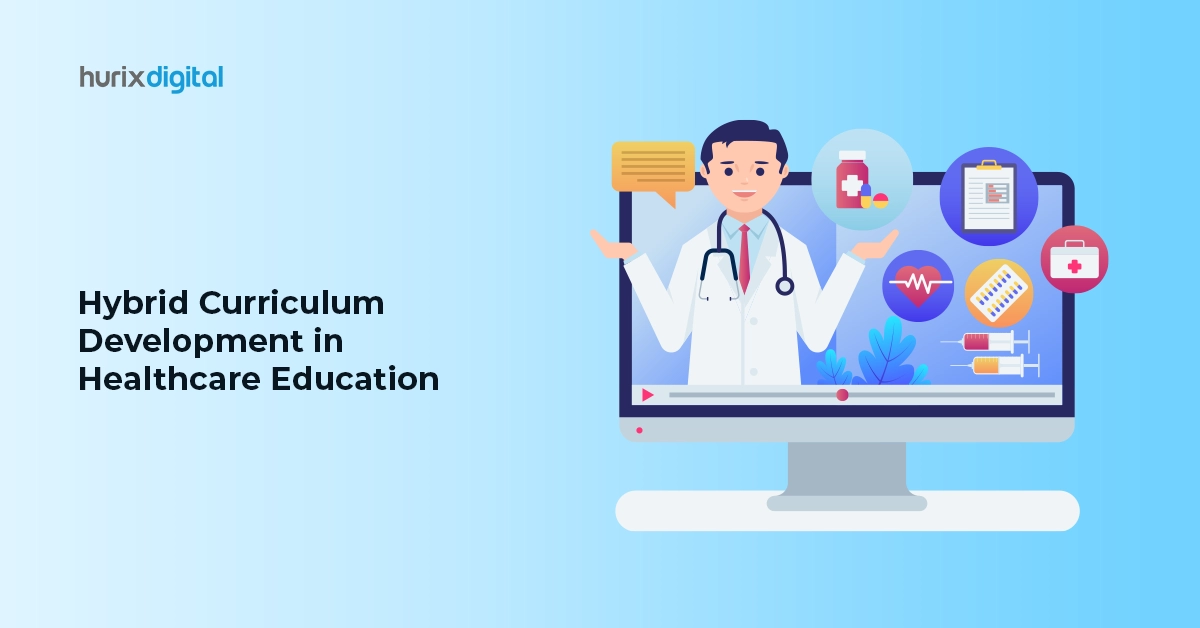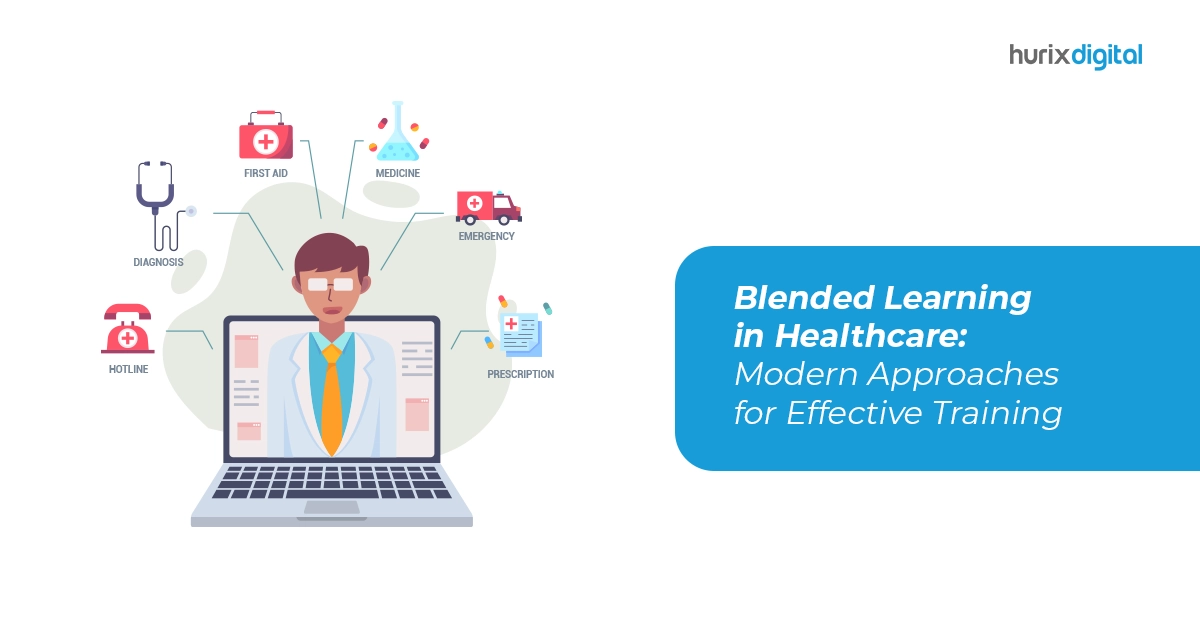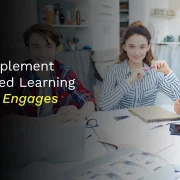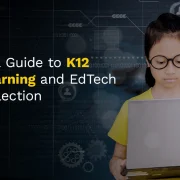
How to Deliver Blended Learning Courses Effectively
Blended learning is a term used to refer to learning practices that combine the experience of traditional classroom learning with the convenience of e-learning. In this blog let’s discuss how to deliver blended learning courses effectively.
Blended learning is highly context-dependent, which makes it difficult to find a universally acceptable definition. However, it is often referred to as hybrid learning or merged learning. In most universities around the globe, blended learning takes place in brick and mortar classrooms with teachers and students interacting in real time as well as online.
However, the sessions can be face-to-face or on the web as well. The resources used can be on-page or simply online. It doesn’t simply mean learning through a virtual medium, but rather utilizing the virtual medium effectively to afford students and teachers flexibility in terms of pace, time, and place. Benefits of Blended Learning Courses in the Workplace In any organization, employees often receive training that is limited to desks within a training room. Although e-learning has become popular over the years, its proactive nature of it can fail to rouse motivation among employees. Due to a substantial part of their childhood being spent in classrooms, many people find it more comfortable to learn in the conventional way, i.e., with the help of an instructor.
However, in instructor-led courses, most of the learning throughput is dependent on the skills of the instructor. Moreover, face-to-face interaction is not possible when employees are spread across time zones. It is here that e-learning has provided a viable alternative as a solution for this issue.
Blended learning can solve the combined problems of both traditional and e-learning. Here are the advantages of blended learning over traditional eLearning methods.
Let’s take a look at the multifarious ways it can benefit employees:
Blended Learning Is Cost Friendly –
All e-learning courses come with their own set of constraints. Since the eLearning course content comes fully designed, it lacks the flexibility of customization. Here’s more on can customized learning solutions solve critical business problems.
With blended learning, an instructor is always available for consultation. As a result, any content that is not available in the online module can be covered by the instructor directly. So, you do not have to purchase or design new courseware, thus saving costs.
Blended Learning Is More Time-Effective –
The overall project and team productivity often take a backseat during the employee training process. However, with the help of blended learning courses, employees can learn in their own time and pace since most of the resources are available online. Instructors are accessible whenever required.
This saves valuable employee time, and hence, they can perform their on-job duties as well as complete their training, without compromising on either.
Blended Learning Is a More Effective Form of Training –
Blended learning courses offer a unique opportunity for employees to learn complex concepts online, with the help of various interactive learning materials. This leads to a better understanding of the concepts involved.
The convenience of an expert’s guidance for consultation allows employees to approach them with queries or problems they may have with the practical application of theoretical concepts. Moreover, employees can also discuss their progress and queries with each other, thus improving coordination and team spirit.
Blended learning also offers another unique advantage, which is isolated attention. Employees who struggle in certain areas can learn and polish their skills in their own time. This helps them practice and overcome their shortcomings on their own confidently.
Blended Learning Can Be Self-Paced and Flexible –
Blended learning provides a way around the varied schedules of different employees. Moreover, not every employee is comfortable with learning at a pace set by a training program. Blended learning courses are therefore designed to help employees learn at a pace they are comfortable with. Here are 10 eLearning design techniques for improved learner engagement.
An employee can choose to cover more ground in their training one week, while choosing to take it slow during a busy week. This allows for a more effective learning experience. Unlike classroom learning, instructor consultation in blended learning is one-to-one. This allows a trainee to avail individual attention, making for far more effective learning.
Blended Learning Is Quantifiable –
Getting feedback from the participants of a classroom-based course is cumbersome, and so is the case with self-led courses. However, using a Learning Management System, blended learning can be easily tracked and quantified.
It allows employees to be tested for their progress. It also allows employees to honestly, and often anonymously, present feedback on how useful the course was. Any future training initiative by the organization can be built based on the feedback. Delivering Blended Learning in a Cost-Effective Way Blended learning allows for a number of ways to reduce corporate spending. Some of them even manage to enhance the effectiveness of the training program.
1. Virtual Classrooms
Classes can be live-streamed in real-time so that any queries that trainees may have can be resolved by a qualified specialist. More often than not, organizations struggle to find qualified trainers to serve their training needs.
In regular classrooms, retaining a trainer for the entire training period can be cumbersome and expensive. With blended learning, pre-recorded video lectures and virtual classrooms aimed at clearing doubts can help curb this expense to a great extent.
2. Flipped Learning
Blended learning has considerably experimented with ways to make learning more effective and less time-consuming. Flipped learning is one way to go about it. Trainees are handed over the training material beforehand and they can go through these documents and try and grasp as much subject matter as they can.
This enables them to already have an idea of the topics to be discussed, which allows classroom interaction to be more effective. Moreover, they can do this on their own time and at their own pace. This means that they are not forced to take time away from their regular work, which allows projects to keep sailing smoothly, saving the organization’s overhead expenses.
3. Webinars
Companies can organize webinars that can be accessed from anywhere and via any device. Webinars are cost-effective as there’s no requirement for a specific training location. Organizations can either use a pre-recorded webinar session which is available on the internet for free. Or they can have an external instructor or an internal SME deliver webinar-based training for their employees.
4. Learning Management System
One of the most cumbersome tasks associated with any classroom training course is the administration and evaluation of the training. It takes time, effort, and money to not only organize and administer training but to also evaluate the progress made by employees during the course.
With blended learning, all of this is handled by learning management systems. An LMS will make organizing and managing the blended learning courses better way. These are software that is fully equipped to handle a course, starting by intimating all parties involved of the schedule, putting up documents needed for the training, administering evaluation modules, and presenting a progress report at the end. Here’s more on how to leverage your LMS to create a blended learning environment. Conclusion: Today, blended learning is seen as the most effective training option for both large and small enterprises. It brings to the table a unique mix of cost-effectiveness and high efficiency, which is hard to find elsewhere.
With blended learning courses, companies can aim to effectively utilize the time of their employees in delivering productive output, and at the same time upskill them to perform their duties efficiently.
Related:
Is Blended Learning the Right Approach for Your Enterprise?
How to Use Blended Learning for Corporate Training
10 Best Practices in Blended Learning
Switch to Blended Learning for Better Learning Outcomes








